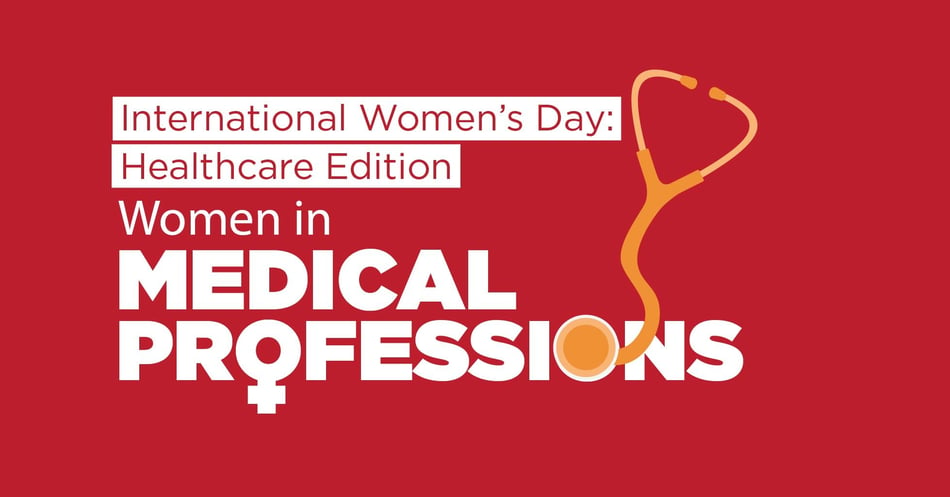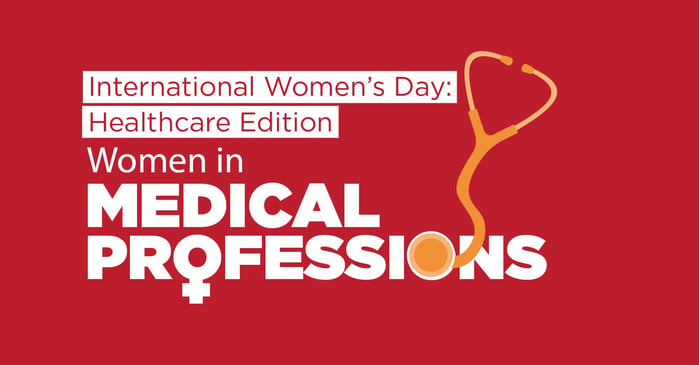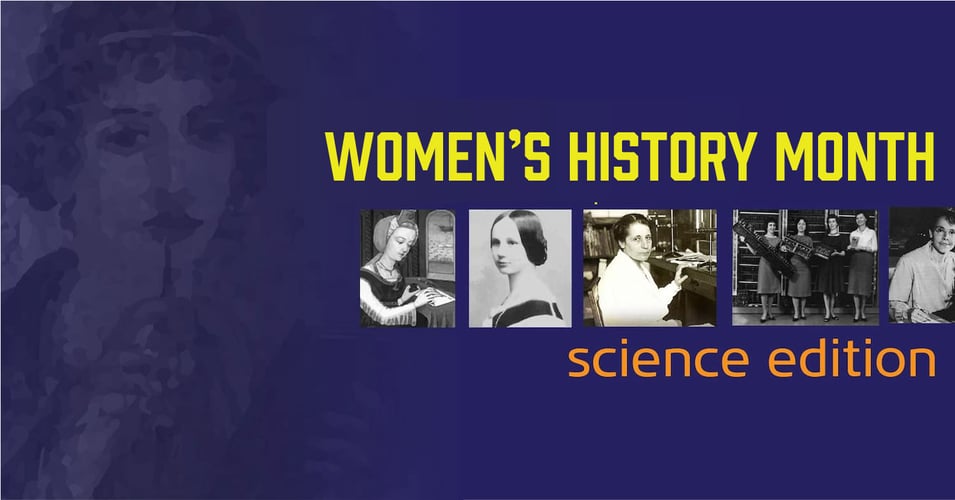International Women's Day: Healthcare Edition

 Today is International Women's Day, a day celebrating women's achievements and bringing attention to gender parity in the workforce. In different forms, it has been observed since the early 1900s, with the first major event being a march in New York City in 1908 calling for better pay and voting rights for women. In 1977, the United Nations adopted a resolution for member nations to celebrate women's rights and achievements on a day of their choice, and started setting an annual theme in 1996. In the United States, March was named Women's History Month in 2011 by President Barak Obama. In honor of today's celebrations and calls for action, today's post will explore the issues of gender parity in healthcare professions.
Today is International Women's Day, a day celebrating women's achievements and bringing attention to gender parity in the workforce. In different forms, it has been observed since the early 1900s, with the first major event being a march in New York City in 1908 calling for better pay and voting rights for women. In 1977, the United Nations adopted a resolution for member nations to celebrate women's rights and achievements on a day of their choice, and started setting an annual theme in 1996. In the United States, March was named Women's History Month in 2011 by President Barak Obama. In honor of today's celebrations and calls for action, today's post will explore the issues of gender parity in healthcare professions.
Throughout human history, women have played a significant role in health care. As healers, herbalists, midwives, physicians, spiritual leaders and many other roles, women participated in the medical care of their communities. Our earliest recorded history describes the struggles women faced to become doctors in the ancient world. Ancient Egypt benefited from gender parity it medicine for centuries before other cultures - Merit-Ptah was the royal court's chief physician in around 2700 BCE, and a medical school centuries earlier was run by a woman. This stands in stark contrast to Ancient Greece, where a woman practicing medicine would face the death penalty into the 1st Century.
Even if there was no gender parity in medicine practice or training, women still played significant roles in healthcare. Over the past few centuries, female participation in medicine has made major progress, with women becoming trained doctors, nurses, and researchers in every field and almost every corner of the Earth. This participation has not always been equal, however, and there is still work to be done today.
In the United States, women were not admitted into medical schools until 1849, when Elizabeth Blackwell became the first woman accepted into an American medical school. By the end of the 1800s, there were 19 women's medical colleges (coeducation would become accepted much later), but those women who did graduate faced discrimination and difficulty finding positions. This struggle continued well into the 20th century, when major breakthroughs were made in the 1960s and 70s. With the passage of Title IX of the Higher Education Act, schools could no longer discriminate on the basis of gender, and the percentage of female medical students grew from 5.5% to 22.4%.
Today's statistics demonstrate great progress in the area of gender parity in medical training. In 2019, female students overtook male students for the first time making up 50.5% of the student body at ACGME-accredited programs. Unfortunately, females only account for 41.4% of the medical faculty, a trend that is seen throughout the scientific fields.
Parity in health professions is also improving. In the early 1900s, women made up only 5% of American physicians. Today, just over 1/3 of all doctors are women, and female doctors make up over 64% of pediatricians. These trends appear to continue in medical school residents, with women making up the great majority of those studying family medicine, pediatrics, and obstetrics/gynecology. In the allied health professions, such as nursing, women dominate every field, with ratios as high as 9:1.
Despite improvements in access to medical training and professions, there is still work needed in achieving pay equality. The pay gaps in these fields are startling. 1 in 3 doctors are women, but they make only 69¢ to every dollar earned by their male colleagues, even adjusting for factors such as age, experience, and specialty. Despite women's dominance in the nursing field, a female nurse will earn 91¢ to her male nurse colleagues' dollar. 84% of home-care nurses, including psychiatric health aides, are women - who make 76¢ to their male colleagues' $1.
What can we do to continue the progress towards gender parity in healthcare professions? Awareness of disparity is an important first step. Supporting women who speak up for a voice, for change, and for equality is also important. Helping future generations see women as an integral part of our health care is critical - not only for little girls to see role models, but also for little boys to see women in these important roles as well. There is much to be done, but a shared vision and collaboration will get us there, together.
If you want to know who is working towards gender parity and learn about how you can take part, check out these national and international organizations. Today is a great day to start making a difference!
The Association for Women in Science Advocacy for women in science
Women in Science Research Network (UK) Historians and scientists working to record history
Scientista For campus women in STEM
Latinas in STEM For Hispanic girls and young women
American Medical Women's Association Women in medicine and women's healthcare
Group on Women in Medicine and Science (AAMC) Advocacy and opportunity
Editor's Note: This post was originally published in March 2017 and has been updated for freshness, accuracy and comprehensiveness.
![EOScu Logo - Dark - Outlined [07182023]-01](https://blog.eoscu.com/hubfs/Eoscu_June2024/Images/EOScu%20Logo%20-%20Dark%20-%20Outlined%20%5B07182023%5D-01.svg)




